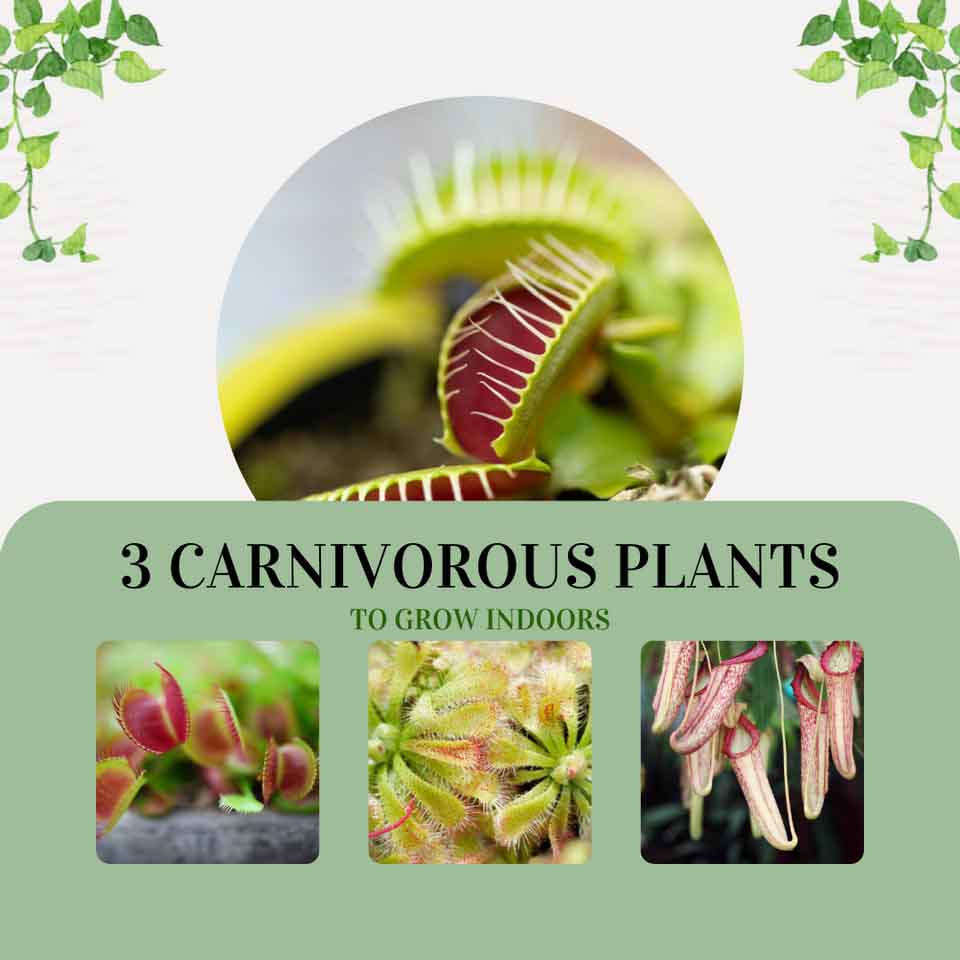Plants are usually seen as benign and unaggressive fixtures of nature. That’s not always the case though, and certain plants can actively trap and eat their prey. Today, we’ll look at 3 such plants, and show you carnivorous houseplants that you can start growing today.
Each of these plants are a bit different from your typical houseplants in that they actually attract and eat pests. If you’re looking for a plant that does more than just look pretty (although these plants are beautiful in their own right) then read on.
Venus Flytrap
First up we have probably the most popular carnivorous houseplant, the venus flytrap. The venus flytrap lures insects into its maw, then quickly snaps shut trapping them inside. This provides nutrients to the plant, while at the same time being spectacular to view.
Venus flytraps only grow a few inches maxing out at only about 5-6” tall. This makes them perfect for indoor growing, and great even in small spaces.
Care Tips
While venus flytraps have a reputation of being difficult to grow, the key is to mimic their native environment. You want to plant them in well draining soil, keep the soil moist, and keep them away from cold temperatures.
For light, keep your flytrap out of direct sunlight. You still want to provide several hours of light per day, but make sure it’s indirect light. Too intense of light can quickly burn out the leaves of the plant.
The flytraps are also heavy feeders, and you should look to feed them every other week. Most small insects work, but you can also use a feeding formula. When feeding you should only feed a single “mouth” of the plant. You don’t need to individually feed every one as all the nutrients end up in the plant.
Spoonleaf Sundew
For those looking for a bit more color, the spoonleaf sundew is a great choice. This plant flowers quite brilliantly, and a well cared for plant can flower year round.
While the spoonleaf can be fed insects like the flytrap, they can also be fed certain fish pellets. This is an interesting option for those that don’t want to store insects in their home. Check out this article for a full list of food sources.
Care Tips
The good news here is that the spoonleaf sundew is quite hardy and easy to care for. There are a few things to keep in mind though.
First, give them lots of bright but in-direct sunlight. Direct sunlight can be too much for this plant and burn out the leaves.
For watering, keep the soil moist and water when the top inch is dry to the touch. On the topic of soil, like many other carnivorous plants, spoonleafs naturally grow in nutrient poor soil. Use special carnivorous plant soil to mimic this in your home. This soil more closely resembles the bogs and wetlands these plants grow in than traditional potting soil.
Tropical Pitcher Plants
Our last carnivorous houseplant is the pitcher plant which is aptly named due to its unique shape. The characteristic “pitchers” fill with nectar what attracts and subsequently digests insects that find their way inside.
Care Tips
To start, it’s important to understand that there are a variety of pitcher plants you can grow. Each of the varieties is native to a different region, and therefore has its own unique care.
For example, the yellow pitcher plant is native to Texas and Florida and likes to have full, bright sun. Compare that to the purple pitcher plant which grows in the more temperate regions of Canada and likes more in-direct sunlight. The key is to understand the variety of plant you’re growing, and tailor the care to match the plant’s needs.
Common to all varieties though is the need for moist soil. These plants tend to grow in boggy locations, and like their soil to be slightly moist at all times. You should check the soil everyday, and water when dry.
You should also feed them every couple of weeks. Freeze dried insects are a good option that provide the nutrients the plant needs to grow. This is generally an easier option than catching your own insects.
Growing Carnivorous Houseplants
Growing your own carnivorous plants is fun and adds an extra level of excitement beyond traditional plants. Hopefully one of the above plants has inspired you, but if not there are tons of other plants out there to choose from. Growing a carnivorous plant is a special treat, and one every gardener should experience.







